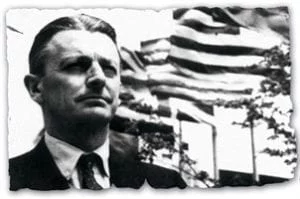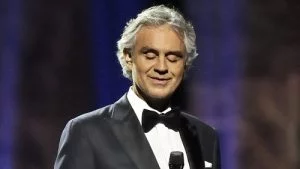The 1950s were the first full decade after the end of World War II and is remembered as a prosperous time of recovery from the Great Depression of the 1930s and the war years of the 1940s. Everyone collectively breathed a sigh of relief. It was a time of new styles that broke with the past, like mid-century modern design, and many firsts, inventions, and discoveries that would become symbolic of the 20th century as a time of looking forward. Diners Club, the first modern credit card was introduced in 1950, which would eventually change the financial lives of every American in the years to come in the modern age of consumerism.
Fifties Fashion
 With the economic boom in the Fifties, glamour become fashionable once again and A-line and pencil skirts were very popular form-fitting fashions. Dresses in the decade would often feature stylish ruffles or lace accents and were usually knee-length or tea-length. Going into the late fifties and 1960s mini-dresses and maxi-length skirt outfits entered the scene. The mid-50’s trends in women’s fashion changed again. Round-neck styles on sleeveless shirts or long sleeve shirts were popular, as well as polo-necks. Dolman sleeves dominated fashionable tops in the fifties and sixties, The examples below are from Our new updated Fifties Fashion Section, with examples of Ladies, Mens and Children’s Fashion Clothes and Accessory examples including dresses, hats, shoes and much more take a little time to browse through them.
With the economic boom in the Fifties, glamour become fashionable once again and A-line and pencil skirts were very popular form-fitting fashions. Dresses in the decade would often feature stylish ruffles or lace accents and were usually knee-length or tea-length. Going into the late fifties and 1960s mini-dresses and maxi-length skirt outfits entered the scene. The mid-50’s trends in women’s fashion changed again. Round-neck styles on sleeveless shirts or long sleeve shirts were popular, as well as polo-necks. Dolman sleeves dominated fashionable tops in the fifties and sixties, The examples below are from Our new updated Fifties Fashion Section, with examples of Ladies, Mens and Children’s Fashion Clothes and Accessory examples including dresses, hats, shoes and much more take a little time to browse through them.
Toys
Childrens toys offered a much wider range following the boom in babies born, and toys were very much gender designed with dolls, prams, dressmaking for girls toys and Cowboys and indians, cars and construction sets for boys. Legos were introduced in 1958.
Pop Culture
 In the 1950s, televisions became something the average family could afford, and by 1950 4.4 million U.S. families had one in their home. The Golden Age of Television was marked by family-friendly shows like I Love Lucy, The Honeymooners, The Twilight Zone and Leave It To Beaver. In movie theaters, actors like John Wayne, James Stuart, Charlton Heston, Marlon Brando, James Dean, Grace Kelly, Frank Sinatra, Audrey Hepburn, Jerry Lewis, Dean Martin, Elizabeth Taylor and Marilyn Monroe dominated the box office. The Abstract Expressionism of Jackson Pollock and Willem de Kooning signaled a new age in art, paving the way for the Pop Art of artists like Andy Warhol in the 1960s.
In the 1950s, televisions became something the average family could afford, and by 1950 4.4 million U.S. families had one in their home. The Golden Age of Television was marked by family-friendly shows like I Love Lucy, The Honeymooners, The Twilight Zone and Leave It To Beaver. In movie theaters, actors like John Wayne, James Stuart, Charlton Heston, Marlon Brando, James Dean, Grace Kelly, Frank Sinatra, Audrey Hepburn, Jerry Lewis, Dean Martin, Elizabeth Taylor and Marilyn Monroe dominated the box office. The Abstract Expressionism of Jackson Pollock and Willem de Kooning signaled a new age in art, paving the way for the Pop Art of artists like Andy Warhol in the 1960s.
Television had become big competition and in the 1950’s movie studios wanted to get people back into theaters. They made big movies with high production values, such as The Ten Commandments in 1956 and Ben Hur in 1959. Alfred Hitchcock was a major force in the decade, with some of his most noteworthy films being made including Rear Window and North by Northwest. Variety was also the name of the game with many popular musicals, comedies, westerns, and science fiction movies coming out of the 1950’s.
Music
Elvis Presley. Sam Cooke. Chuck Berry. Fats Domino. Buddy Holly. The 1950s saw the emergence of Rock ‘n’ Roll, and the new sound swept the nation. It helped inspire rockabilly music from Jerry Lee Lewis and Johnny Cash. People swayed to The Platters and The Drifters. Music marketing, changed, too: For the first time, music began to target youth. On February 3, 1959, American musicians Buddy Holly. Ritchie Valens and J.P. Richardson died in a plane crash over Clear Lake, Iowa, in what became known as “The Day The Music Died”—an event immortalized in Don McLean’s 1972 song “American Pie.”2
R&B and Rock ‘n’ Roll only helped to bridge the gap between blacks and whites and further the civil rights movement. While those genres paved the way for future music, traditional poptraditional pop and country music clung to the past with old standards remaining popular and a multitude of covers topping the charts. Either way, this decade was a time of innovation that helped to influence everything that we listen to on the radio today.
Read More…
Money and Inflation 1950’s
To provide an estimate of inflation we have given a guide to the value of $100 US Dollars for the first year in the decade to the equivalent in today’s money:
- If you have $100 Converted from 1950 to 2021 it would be equivalent to $1,104 today
- In 1950 a new house cost $8,450.00 and by 1959 was $12,400.00
- In 1950 the average income per year was $3,210.00 and by 1959 was $5,010.00
- In 1950 a gallon of gas was 18 cents and by 1959 was 25 cents
- In 1950 the average cost of new car was $1,510.00 and by 1959 was $2,200.00
Sporting Changes In The 50’s
Baseball
- New York teams rule 50s baseball with the Yankees, Giants and Dodgers
- The game spreads with whole teams being relocated to other parts of the country including Boston Braves to Milwaukee and New York Giants to San Francisco
- Television begins broadcasting live games and unlike Radio a decade before had a negative impact on attendance
Basketball
- Chuck Cooper drafted by the Boston Celtics in 1950, becomes the first black player in the NBA.
- 24-second shot clock Introduced in Pro Game In 1954 forcing a team to shoot it within that 24 seconds, or give the ball to the other team.
- Bill Russell and Wilt Chamberlain dominate the game winning 8 out of 10 MVP trophy’s from 1958 to 1968
Soccer
- Following the end of World War II the game takes center stage in 1950 with the first world cup since 1938 held in Brazil where Uruguay won the world cup again.
- Attendance at British soccer matches Skyrocket with 30 million going to stadiums around the UK.
American Football
- Television Helps Gain New Fans to NFL but decreases local atendence
- Cleveland Browns Make Big Impact ON NFL winning Three NFL Championship games
Ice Hockey
- Detroit Red Wings and Toronto Maple Leafs Dominate The Decade
- Televised hockey Takes Off
- Zamboni ice-smoothing tractor Used For First Time
- Facemask For goaltenders introduced
Sources:


![CFR Study No. 7: "...building a New International Order [which] must be Responsive to World Aspirations for Peace, [and] for Social and Economic Change"](https://historyheist.com/wp-content/uploads/1959/11/cfr-05-300x187.jpg.webp)











